Apple iPhone 4S: Thoroughly Reviewed
by Anand Lal Shimpi & Brian Klug on October 31, 2011 7:45 PM EST- Posted in
- Smartphones
- Apple
- Mobile
- iPhone
- iPhone 4S
History loves to repeat itself, and even Apple isn’t immune to the yearly cycle of rumor and release. Leading to each year’s iPhone refresh, excitement, rumors, and hype build to a fever pitch, features and designs are added into an increasingly unrealistic combination, and finally everyone is silenced at the device’s eventual unveiling.
Today we’re looking at Apple’s latest iPhone refresh, the iPhone 4S (henceforth just 4S).
The review has to start somewhere, and the path of least resistance is usually just exterior appearances - in this case the 4S is easy to go over. The 4S keeps the overall form factor and design of its predecessor, but to call it identical to the iPhone 4 isn’t entirely correct. Instead, the 4S borrows its stainless steel band break locations from the CDMA iPhone 4, which we talked about extensively when it finally released. The GSM/UMTS iPhone 4 previously had three notches, where the CDMA iPhone 4 and 4S have a total of four.
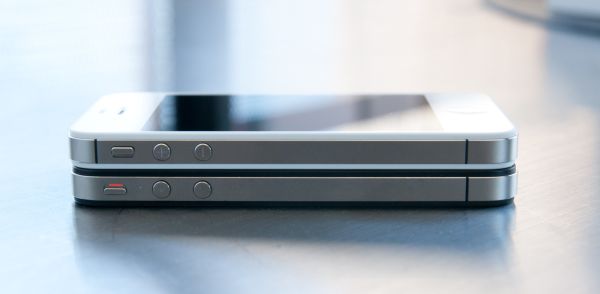
Top: iPhone 4S, Bottom: iPhone 4
The long and short of this change is that the notches have been moved around to accommodate a design with two cellular antennas. One is up at the very top, the other is at the very bottom - the two are the small U shaped portions. The result of this change is that the 4S has a very symmetrical design, as opposed to the GSM/UMTS 4’s asymmetric layout.
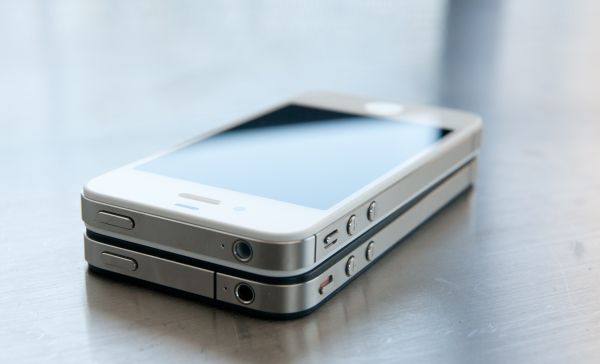 Top: iPhone 4S, Bottom: iPhone 4
Top: iPhone 4S, Bottom: iPhone 4
Just like the CDMA iPhone 4, the 4S also moves the vibrate/lock switch down the device just slightly to accommodate the new break for the top antenna band. This is the physical change that breaks compatibility with cases designed for the older GSM/UMTS iPhone 4. If you recall previously, however, Apple refreshed its bumpers with a new “Universal” line around the time of the CDMA iPhone 4 launch. At that time, case makers also followed suit with a larger vibrate/lock switch port. The result is that if you have a “universal” case created after the launch of the CDMA iPhone 4, you likely won’t need a new one for the 4S.
I say likely because some cases that cover the front of the 4S and are universal might not work as well owing to a small change in the placement of the 4S’ ambient light sensor. It’s going to be a case by case basis to determine which 4 cases that cover the front of the display work with the 4S.
The rest of the 4S exterior is superficially identical to its predecessor, which has become something of a point of contention for shoppers who like being able to identify themselves as owning a 4S, as opposed to a 4. There are, however, subtle differences you can leverage to tell the 4S from its two 4 brethren. The 4S includes the regulatory (FCC, recycling, European Conformity, e.t.c.) logos below its model numbers and FCC ID. The CDMA 4 doesn’t include those logos. Again, the GSM/UMTS 4 is alone with its three-notch stainless steel bands. It is admittedly curious that Apple hasn’t decided to make some other larger change to distinguish the 4S from the other two - there’s no mention of 4S anywhere on the phone. The iPhone 3G and 3GS were famously distinguished from each other by the inclusion of chrome iconography on the back. I fully expect Apple to update their identifying iPhone page with basically the above information at some point in time, but to say that the 4S is identical to the previous device is disingenuous.
The 4S design is without a doubt, however, an evolution of the CDMA iPhone 4’s design. Like the latter, the 4S includes the same improved vibration unit instead of the counterweight vibrator that most smartphones include. The result is a virtually silent, completely smooth vibrate, instead of the louder rattle and sharp acceleration that accompanies the counterweight vibration. The result is much less conversation-interrupting noise when the 4S vibrates during a call, and less intrusive notification.
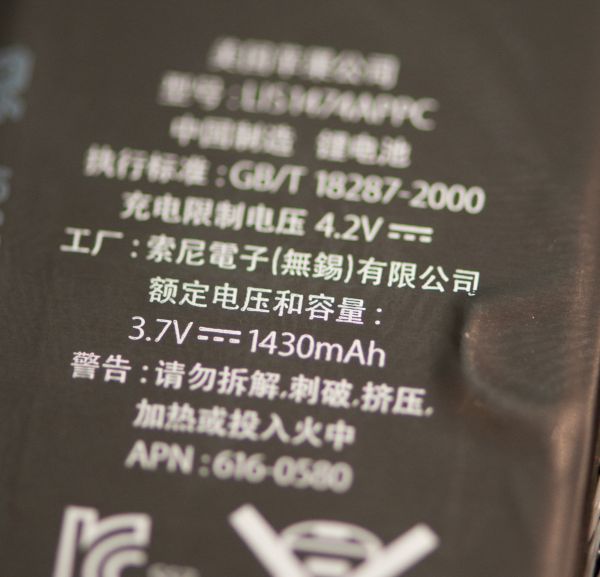
Battery capacity up to 1430 mAh
The other subtle change is an extremely small jump in battery capacity, from 1420 mAh in the 4 to 1430 mAh in the 4S. This is a very small change that boosts the capacity in watt-hours from 5.25 to 5.3. In addition the 4S puts on a little bit of weight, from 137 to 140 grams, but again nothing major.
Even the 4S packaging is basically the same as prior versions, including the same design and contents. Inside you get the phone, dock cable, headset mic, and the same smaller 5V, 1A charger that came with the 4.
| Physical Comparison | |||||||
| Apple iPhone 4 | Apple iPhone 4S | HTC Sensation | Samsung Galaxy Nexus | Samsung Galaxy S 2 | |||
| Height | 115.2 mm (4.5") | 115.2 mm (4.5") | 126.3 mm (4.97") | 135.5 mm | 125.3 mm (4.93") | ||
| Width | 58.6 mm (2.31") | 58.6 mm (2.31") | 65.5 mm (2.58") | 67.9 mm | 66.1 mm (2.60") | ||
| Depth | 9.3 mm ( 0.37") | 9.3 mm ( 0.37") | 11.6 mm (0.46") | 8.94 mm | 8.49 mm (0.33") | ||
| Weight | 137 g (4.8 oz) | 140 g (4.9 oz) | 148 g (5.22 oz) | 135 g | 115 g (4.06 oz) | ||
| CPU | Apple A4 @ ~800MHz Cortex A8 | Apple A5 @ ~800MHz Dual Core Cortex A9 | 1.2 GHz Dual Core Snapdragon MSM8260 | 1.2 GHz TI OMAP 4460 Dual Core Cortex A9 | 1.2 GHz Exynos 4210 Dual Core Cortex A9 | ||
| GPU | PowerVR SGX 535 | PowerVR SGX 543MP2 | Adreno 220 | PowerVR SGX 540 | ARM Mali-400 | ||
| RAM | 512MB LPDDR1-400 | 512MB LPDDR2-800 | 768 MB LPDDR2 | 1GB LPDDR2 | 1 GB LPDDR2 | ||
| NAND | 16GB or 32GB integrated | 16GB, 32GB or 64GB integrated | 4 GB NAND with 8 GB microSD Class 4 preinstalled | 16GB or 32GB NAND integrated | 16 GB NAND with up to 32 GB microSD | ||
| Camera | 5MP with LED Flash + Front Facing Camera | 8MP with LED Flash + Front Facing Camera | 8 MP AF/Dual LED flash, VGA front facing | 5 MP AF with LED flash, 1.3MP front facing | 8 MP AF/LED flash, 2 MP front facing | ||
| Screen | 3.5" 640 x 960 LED backlit LCD | 3.5" 640 x 960 LED backlit LCD | 4.3" 960 x 540 S-LCD | 4.65" 1280 x 720 Super AMOLED | 4.27" 800 x 480 SAMOLED+ | ||
| Battery | Integrated 5.254Whr | Integrated 5.291Whr | Removable 5.62 Whr | Removable 6.475 Whr | Removable 6.11 Whr | ||


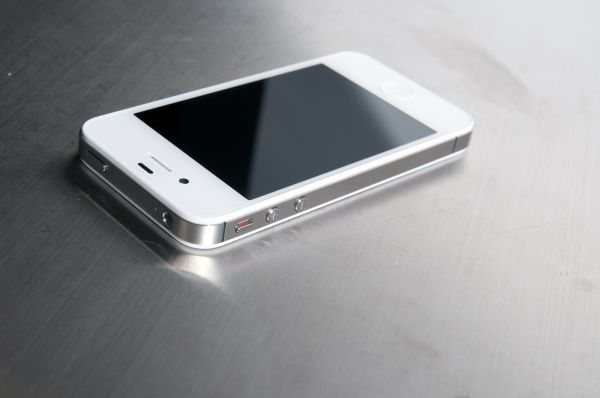

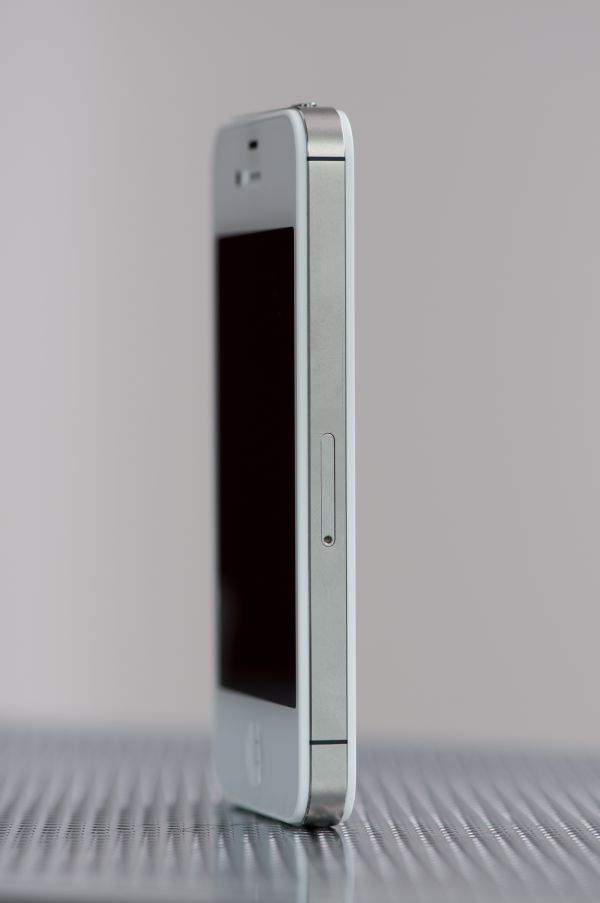














199 Comments
View All Comments
ados_cz - Tuesday, November 1, 2011 - link
I have the 4S now and the problem is gone but once my girlfriend comes with her 4, I will make a video and post it to prove you wrong. People have no problems only in areas where signal is really strong. Why would I possibly want to lie?wonderfield - Tuesday, November 1, 2011 - link
What's of concern here is not whether the issue (signal loss) can be demonstrated but whether the phone is, in Brian's/Anand's words, "usable" with the defect or not. It's certainly possible for the GSM iPhone 4 to be rendered unusable in a low signal strength area with a natural, right-handed grip just as it can be rendered unusable with a death grip. That's not to say the phone will be unusable in most scenarios, however, because in most scenarios the phone should function properly. There are certainly edge cases, and the issue is more significant for those who're left-handed and for those who live/work in very poor coverage areas (where it can become an issue), but, again, that's not the typical use case. It's why I categorize Brian's claim that the GSM 4 is not usable without a case as being disingenuous.Realistically, you don't need a "really strong" signal to have not have any problems with the phone, you only need a signal great enough to overcome any attenuation introduced by making contact with the antenna. The extent of the attenuation, as demonstrated in another Anandtech article to which you might refer, is not as significant as portrayed by some media outlets.
ados_cz - Tuesday, November 1, 2011 - link
As far as the need for good signal went I needed to use the case all the time otherwise I would always have to hold the phone in unnatural way. iPhone 4/S is a really beautiful piece of hardware and It was really upseting that I had to use the case and spoil the desing. My close friend living just 15 miles next to me in Perth does not use the case and when he does not care to not to hold the phone in sensitive area, the call drops. It happend to me with him on the phone on few occasions. Few of my friends at uni need to use the case for iPhone 4 as well. The problem was not overstated. Either learn to hold the phone unnaturaly avoiding joining those two critical antenna strips or use a case. I opted for a case. My friend in the London got on well without case, but he learned to hold it by the to when calling. Anyway, I am glad that I have the 4S now and I think my girlfriend does not mind the case on her (former mine) iPhone 4. It so well made piece of hardware and so affordable here in Britain. You are being ripped off in US. Check the deals for iPhones on www.three.co.uk I got mine iPhone 4 for 69 pounds 5 months ago with two years contract for 35 pounds a month (2000 mins any network, 5000 mins mine network, unlimited 3G data with no fairu user policy). I paid 189 pounds for girlfriends (now mine) 4S for 32GB white version just few days ago and she got the same 35 pounds contract.Tetracycloide - Tuesday, November 1, 2011 - link
"I have hundreds of friends who have iPhone 4's who've never had any issue with signal loss at all."Really? Name them. Numbered from one to at least two hundred if you please.
Overstating the strength of your anecdotal evidence doesn't make you look right it makes you look biased.
For what it's worth, I think you're a huge tool for, well, being such a huge tool.
doobydoo - Wednesday, November 2, 2011 - link
Don't be ridiculous.To label someone a 'tool' for stating that their friends don't have issues with signal loss on a phone, is quite frankly ironic.
To suggest I would list my friends names in a bid to convince such a low level individual is even more ridiculous than the rest of your comment (which is a lot).
If you really need hard evidence, I'd point you in the direction of the millions of iPhone customers who gave the iPhone 4 the highest satisfaction ratings of any phone, full stop. Bit hard to imagine that happening if they cant make calls on it, don't you think?
To claim I'm overstating my quite logical claim doesn't make you look right, it makes you look biased.
Tetracycloide - Wednesday, November 2, 2011 - link
I labeled you a tool because your response to another commenter saying they experienced an issue you and 'your friends' never saw was 'your a liar' or more literally "For what it's worth, I don't believe you anyway." That's where you were a tool, that part right there.Your 'hundreds' comment was absurd and you know it. To obtusely pretend I'm actually asking you for a list of names and act like that's absurd (it was obviously rhetorical) is to miss the point which was: you do not actually have 200+ individual examples from 'friends' to draw from. That's absurd.
Your claim was hardly 'logical' it was an absurdly overblown statistic that, even if it was accurate, would still be anecdotal. As are you're 'millions of iPhone customers' by the way. The phone looses signal if held incorrectly. That is the objective reality, full stop.
doobydoo - Friday, December 2, 2011 - link
How ironic that your justification for calling me a tool, is that I essentially disbelieved someone else, after that's all your comments to me are based on.Not only that, but how ridiculous and illogical to say someone is a tool for not believing something. Grow up?
'Hundreds' is not absurd at all, perhaps it sounds absurd to a social recluse? But I can actually name at least 200 friends of mine who use iPhones. Sorry if having friends is a strange concept to you. How dare you claim that you 'do not believe' my 200+ friends claim - that makes you a tool (it's a definition handed down to me by someone special).
Even if my claim was anecdotal, so what? Your criticism of my claim wasn't that it was anecdotal, and I never masqueraded it as anything other than what it was?
The 'MILLIONS' of iPhone customers is not anecdotal at all, by the way - they HAVE factually given the iPhone 4 the best user ratings of any phone of all time. That's reality, fact, pure and simple. They wouldn't do this, if they couldn't make phone calls, don't you agree?
I own an iPhone 4, and it doesn't LOSE (wtf is 'looses') signal in any meaningful way (as in, it never affects call quality or causes calls to be dropped) if held in any way I want. Unbelievable that you make such claims then try to define them as 'objective' - exactly the criticism you levy at me.
gcor - Monday, October 31, 2011 - link
Reading the specs on a lead acid 12v battery I have, I discovered that the higher the load in amps, the lower the total amp hours the battery will output. For example, the spec's say that a particular model can deliver a max of 1 amp hour over 20 hours, but only .5 amp hour over 12 hours.I'm guessing this is also true for the batteries in smartphones and laptops. This assumption seems to be supported when looking at the 3D gaming battery life results in the review, where a 10% increase in power consumption on the 4S, resulted in a 25% drop in battery life.
I assume this has implications for the "race to sleep" concept, as an increase in amp draw by the device may reduce the battery efficiency enormously, as well as actually using more power.
Anyway, just a thought to add into the mix when estimating a % speed increase required for a pay off in additional sleep.
Pliablemoose - Monday, October 31, 2011 - link
Your recommendations mirror my own thoughts, picked up 3 iP4's in the last month, 2 ATT models to put on Straight Talk for $499/year each with unlimited talk text and data (yes, I know it's not really unlimited data) for my kids, and a Verizon iP4 for me. I actually replaced a ThunderBolt with an iP4, got tired of the poorly executed radio software and the constant reboots to keep it connected. The ThunderBolt is a heck of a 4G LTE modem, sort of a poor phone, and definitely a brick with the extended battery it needs get me through a day of web surfing and stock trading.Saving my upgrade next year for an iP5, and keeping my fingers crossed for at least a 4" screen.
ltcommanderdata - Monday, October 31, 2011 - link
"Furthermore Apple even seems to be ok with combining a process shrink with a new architecture as we saw with the iPhone 3GS. It's generally thought of as a risky practice to migrate to both a new process technology and a new architecture in the same generation, although if you can pull it off the benefits are wonderful."I don't believe Apple has actually pushed a new process and architecture simultaneously. Up to now, the iPod Touch was generally the test platform for new processes as a shrink on an existing architecture.
The full evolution is:
iPhone 2G/1st gen iPod Touch/iPhone 3G 412MHz ARM11 90nm
2nd gen iPod Touch 533MHz ARM 11 65nm
iPhone 3GS 600MHz Cortex A8 65nm
3rd gen iPod Touch 600MHz Cortex A8 45nm
iPad 1/iPhone 4/4th gen Touch 1GHz/800MHz Cortex A8 45nm
iPad 2/iPhone 4S 1Ghz/800MHz Cortex A9 45nm
It is curious that we haven't seen a shrink of an existing chip as a pilot for a next gen process, either Samsung 32nm or TSMC 28nm, although the iPod Touch not being updated this year didn't leave many options. It would no doubt be too risky to put a new process pilot chip on the iPhone 4S. I believe iFixit did find some different markings on the 2011 iPod Touch, but I haven't heard about any size difference so that makes a large shrink unlikely. Is there any chance the 2011 iPod Touch could be piloting the A4 on a TSMC 40nm process as a means of getting that relationship off the ground? Is there enough commonality in the tools for the 40nm and 28nm processes to make piloting on 40nm a worthwhile interim step?